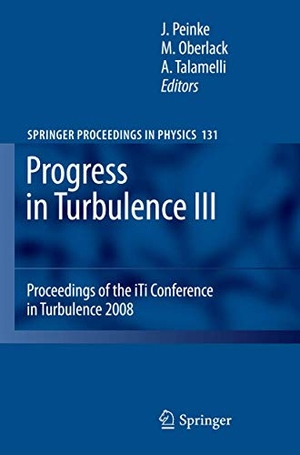Für statistische Zwecke und um bestmögliche Funktionalität zu bieten, speichert diese Website Cookies auf Ihrem Gerät. Das Speichern von Cookies kann in den Browser-Einstellungen deaktiviert werden. Wenn Sie die Website weiter nutzen, stimmen Sie der Verwendung von Cookies zu.
Cookie akzeptieren
Progress in Turbulence III
- Springer Berlin Heidelberg
- 2012
- Taschenbuch
- 280 Seiten
- ISBN 9783642261961
This third issue on ¿progress in turbulence¿ is based on the third ITI conference (ITI interdisciplinary turbulence initiative), which took place in Bertinoro, North Italy. Researchers from the engineering and physical sciences gathered to present latest results on the rather notorious difficult and essentially unsolved problem of turbulence. This challenge is driving us in doing basic as well as applied research. Clear progress can be seen from these contributions in different aspects. New - phisticated methods achieve more and more insights into the underlying compl- ity of turbulence. The increasing power of computational methods allows studying flows in more details. Increasing demands of high precision large
Mehr
Weniger
zzgl. Versand
in Kürze